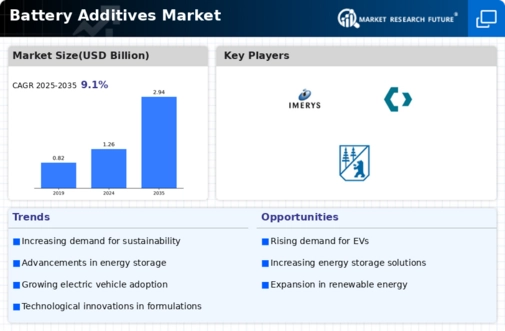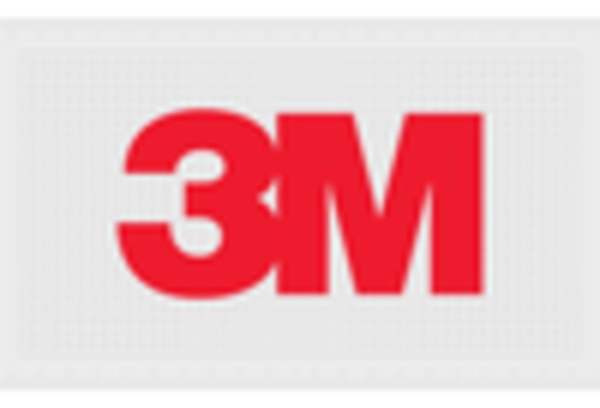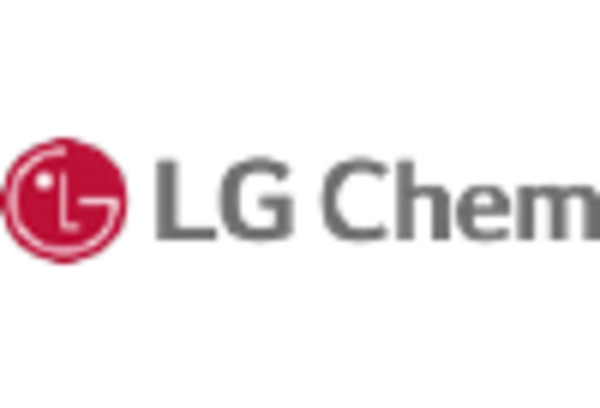Market Analysis
In-depth Analysis of Battery Additives Market Industry Landscape
The Battery Additives market is driven by a dynamic interplay of factors that collectively shape its trajectory. One of the primary driving forces behind the market's growth is the increasing demand for batteries across various industries, including automotive, consumer electronics, and renewable energy. As the global transition towards electric vehicles gains momentum and the adoption of renewable energy storage solutions rises, the demand for high-performance batteries escalates, thereby boosting the need for advanced battery additives. The automotive sector, in particular, plays a pivotal role in driving market dynamics, as electric vehicle manufacturers seek additives to enhance battery performance, longevity, and safety.
Technological advancements and innovations stand out as key factors influencing the Battery Additives market. Ongoing research and development efforts focus on developing new additives that can improve battery efficiency, increase energy density, and address challenges such as capacity degradation. Innovations in materials science, nanotechnology, and chemical engineering contribute to the discovery of novel additives that can optimize various aspects of battery performance. Companies investing in research and staying at the forefront of technological advancements often gain a competitive edge, shaping the overall dynamics of the market.
The regulatory landscape significantly impacts the Battery Additives market. Governments worldwide are implementing stringent environmental regulations and standards to promote sustainable practices, reduce emissions, and ensure the safe disposal of batteries. Compliance with these regulations influences the formulation of battery additives, pushing manufacturers to develop eco-friendly and non-toxic solutions. Additionally, regulatory support for electric vehicles and renewable energy storage solutions directly affects the demand for battery additives, shaping market dynamics by creating opportunities for growth in alignment with sustainable practices.
Raw material availability and pricing constitute essential aspects of the market's dynamics. The production of battery additives relies on key raw materials, and any fluctuations in their availability or pricing can impact the overall cost structure for manufacturers. Supply chain disruptions or changes in material costs can influence product pricing and, subsequently, market dynamics. Companies that establish resilient and diversified supply chains are better positioned to navigate these challenges and maintain stability in the face of market fluctuations.
Consumer preferences and awareness contribute significantly to the Battery Additives market dynamics. As consumers increasingly prioritize sustainability, there is a growing demand for electric vehicles and renewable energy solutions, directly influencing the need for advanced battery technologies. Moreover, consumers are becoming more conscious of the environmental impact of battery production and disposal, driving the market towards cleaner and more sustainable additives. Companies responding to these preferences by offering eco-friendly and recyclable battery additives can gain favor in the market, shaping dynamics through consumer-driven demand.
Market competition and the presence of key players play a crucial role in shaping the dynamics of the Battery Additives market. Intense competition encourages companies to invest in research, product development, and marketing to differentiate their offerings. Strategic collaborations, mergers, and acquisitions also contribute to the competitive landscape, influencing market dynamics by consolidating expertise and resources. Additionally, the market dynamics are shaped by the entry of new players, which can bring fresh perspectives, technologies, and innovations, driving overall growth and evolution within the industry.
Global economic conditions impact the Battery Additives market, influencing factors such as investment, production, and consumer spending. Economic downturns may lead to reduced consumer purchasing power and delayed investments in electric vehicles and renewable energy projects, affecting the demand for battery additives. Conversely, economic growth and increased investments in clean energy initiatives can drive market expansion, shaping the dynamics in a positive direction.
In conclusion, the Battery Additives market is characterized by a complex interplay of factors, including technological advancements, regulatory landscapes, raw material dynamics, consumer preferences, competition, and economic conditions. As the world continues its shift towards sustainable energy solutions, the demand for advanced battery additives is expected to grow, further influencing the market's dynamics. Companies that adapt to these dynamics, stay innovative, and align their strategies with evolving trends are well-positioned to thrive in this dynamic and rapidly evolving market.
Is this conversation helpful so far?

















Leave a Comment